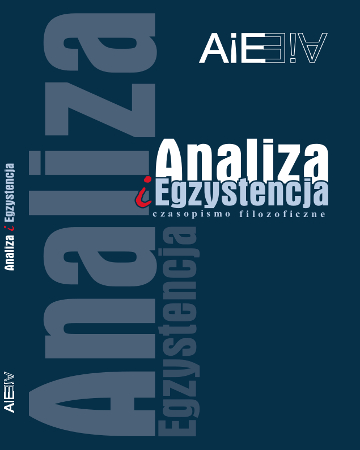
ISSN: 1734-9923
eISSN: 2300-7621
OAI
DOI: 10.18276/aie.2020.52-03





Issue archive /
52 (2020)
Estetyzacja rzeczywistości – skutek dobrobytu czy upadek wartości? Analiza i krytyka poglądów Wolfganga Welscha dotyczących procesu estetyzacji
(Aestheticizing of reality - the result of prosperity or the values collapse? Analysis and criticism of Wolfgang Welsch's views regarding the aestheticizing process)
| Authors: |
Kamil
Kociołek

Uniwersytet Jagielloński, Instytut Filozofii, Wydział Filozoficzny |
| Keywords: | aestheticization beauty aesthetic aesthetical values Wolfgang Welsch welfare metaphysic |
| Data publikacji całości: | 2020 |
| Page range: | 18 (37-54) |
| Klasyfikacja JEL: | Z00 |
Abstract
The article is a polemic with Wolfgang Welsch's criticism of the aestheticization process presented in his article entitled ‘Aestheticization Processes. Phenomena, Distinctions and Prospects’. Its purpose is to show that arguments suggesting a negative assessment of this phenomenon are unfounded and the aestheticization should be rather treated as a sign of human civilization welfare which revealing favourable perspectives than as a problem threatens a degeneration or the fall of values. In the first part of the text, I present the definition of aestheticization and some examples of it. Next, I analyse the potentially negative consequences of this process and fears about its further development pointed out by Welsch. I argue that the aestheticization is a positive phenomenon because people may care of aesthetic values only after satisfying more basic needs. The real consequence of this process is a better understanding of the reality, as the aestheticization emphasizes its immanent susceptibility to modelling which simultaneously enhance a possibilities of influencing on it by the human will. Therefore, instead of a danger for humanity, aestheticization may become a breakthrough in the development of our civilization.
Download file
Article file
Bibliography
| 1. | Baudrillard J. (2005), Symulakry i Symulacja, tłum. S. Królak, Wydawnictwo Biel, Warszawa. |
| 2. | Encyklopedia PWN, hasło „symulacja”. URL = https://encyklopedia.pwn.pl/haslo/symulacja;3982025.html [dostęp 15.06.2019]. |
| 3. | Maslow A. (1943), A Theory of Human Motivation, Psychological Review 50(4): 370-396. |
| 4. | Pierzchalski F. (2017), Estetyka kiczu a rozwój autorytarnego populizmu w Polsce, Autorytarny populizm w XXI wieku. Krytyczna rekonstrukcja, Pierzchalski F., Rydliński B. (red.), Dom Wydawniczy ELIPSA, Warszawa: 69-93. |
| 5. | Rogoziecki R. (2015), Co to jest estetyzacja?, Miscellanea Anthropologica et Sociologica 16(1): 74–95. |
| 6. | Schopenhauer A. (1908), O wolności ludzkiej woli, tłum. A. Stögbauer, URL: https://wolnelektury.pl/media/book/pdf/schopenhauer-o-wolnosci-ludzkiej-woli.pdf [dostęp 20.01.2019]. |
| 7. | Welsch W. (1996), Estetyka i anestetyka, tłum. M. Łukasiewicz, Postmodernizm. Antologia przekładów, R. Nycz (red), Kraków: 520-547. |
| 8. | Welsch W. (2005), Procesy estetyzacji. Zjawiska, rozróżnienia, perspektywy, tłum. K. Guczalska, Estetyka poza estetyką: o nową postać estetyki, Universitas, Kraków. |
| 9. | Wilkoszewska K. (1997), Estetyzacja współczesności, Sztuka i Filozofia 13: 207-211. |
| 10. | Witosz B. (2014), Estetyzacja świata i estetyzacja języka "kolorowej" prasy kobiecej (przyczynek do rozważań o wpływie postmodernizmu na współczesną polszczyznę, Język w mediach : antologia, M. Kita, I. Loewe (red.), Wydawnictwo Uniwersytetu Śląskiego, Wydanie 2, Katowice: 115-122. |